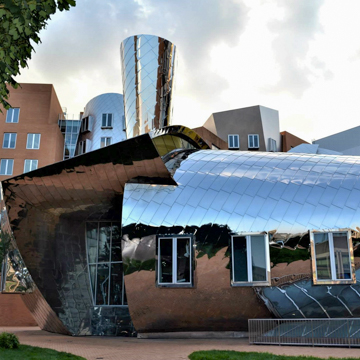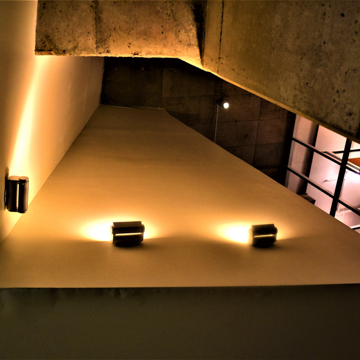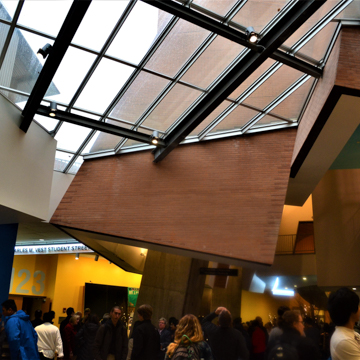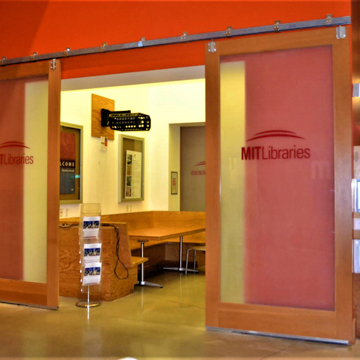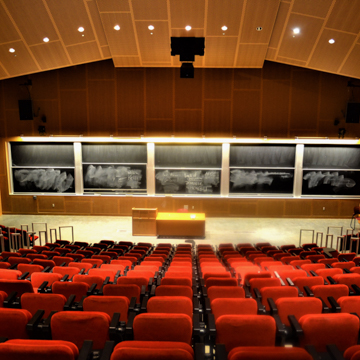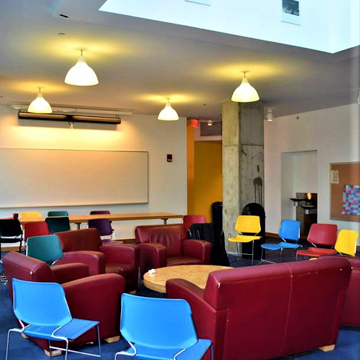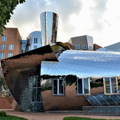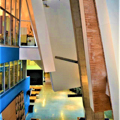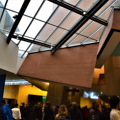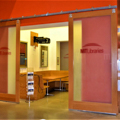You are here
Ray and Maria Stata Center (Bldg. 32)
Of all developments inaugurated by MIT at the turn of the millennium, none is more visible than Frank Gehry's design for this center devoted to “Computer, Information, and the Intelligence Sciences” to replace Building 20. That building, erected during World War II and demolished in 1997 was referred to as the Plywood Palace and became a shrine of science, especially known for the invention of radar, as well as the development of the first atomic clock, the creation of a modern school of linguistics, and the use of strobe photography. Born of wartime emergencies, this makeshift temporary structure has been cited as an “agora, not a university.” It functioned as an intellectual forum for the exchange of ideas, providing an open atmosphere whose innovative spirit Gehry attempted to embody in the replacement structure.
Following intensive dialogues with the new building's future habitants, the architect designed common areas for the interchange of ideas—such as a street winding through the building's interior, culminating in a town center. The configuration of this huge building (424,000 square feet) is made possible by Gehry's application of the CATIA program (computer-aided three-dimensional interactive application), which is also responsible for its incredibly complex forms. The least conventional building on campus, the Stata Center is related to the architect's signature buildings, most notably in Bilbao, Minneapolis, Seattle, and Los Angeles. Characterized by a welter of curved forms and inclined surfaces, it is a total anomaly in the context of MIT. Complexity of materials and a surfeit of color and shapes make the Stata Center a far cry from Building 20.
Approaching the Stata Center from any angle, the observer will be confronted by a cacophony of forms, materials, and hues whose totality is seemingly arbitrary, even chaotic. Within, suspended pylons that appear to defy gravitational forces loom over the concrete, stone, and seemingly miniscule plywood furnishings. Playful, amusing, juvenile, entertaining, hedonistic, and theatrical—witness the exterior amphitheater—will these open intrusive spaces stimulate the imagination, with unpredictable and far-reaching results beneficial to mankind? Adding to the controversy of the Stata Center, MIT sued Gehry in 2007 for design flaws in the building.
Writing Credits
If SAH Archipedia has been useful to you, please consider supporting it.
SAH Archipedia tells the story of the United States through its buildings, landscapes, and cities. This freely available resource empowers the public with authoritative knowledge that deepens their understanding and appreciation of the built environment. But the Society of Architectural Historians, which created SAH Archipedia with University of Virginia Press, needs your support to maintain the high-caliber research, writing, photography, cartography, editing, design, and programming that make SAH Archipedia a trusted online resource available to all who value the history of place, heritage tourism, and learning.























